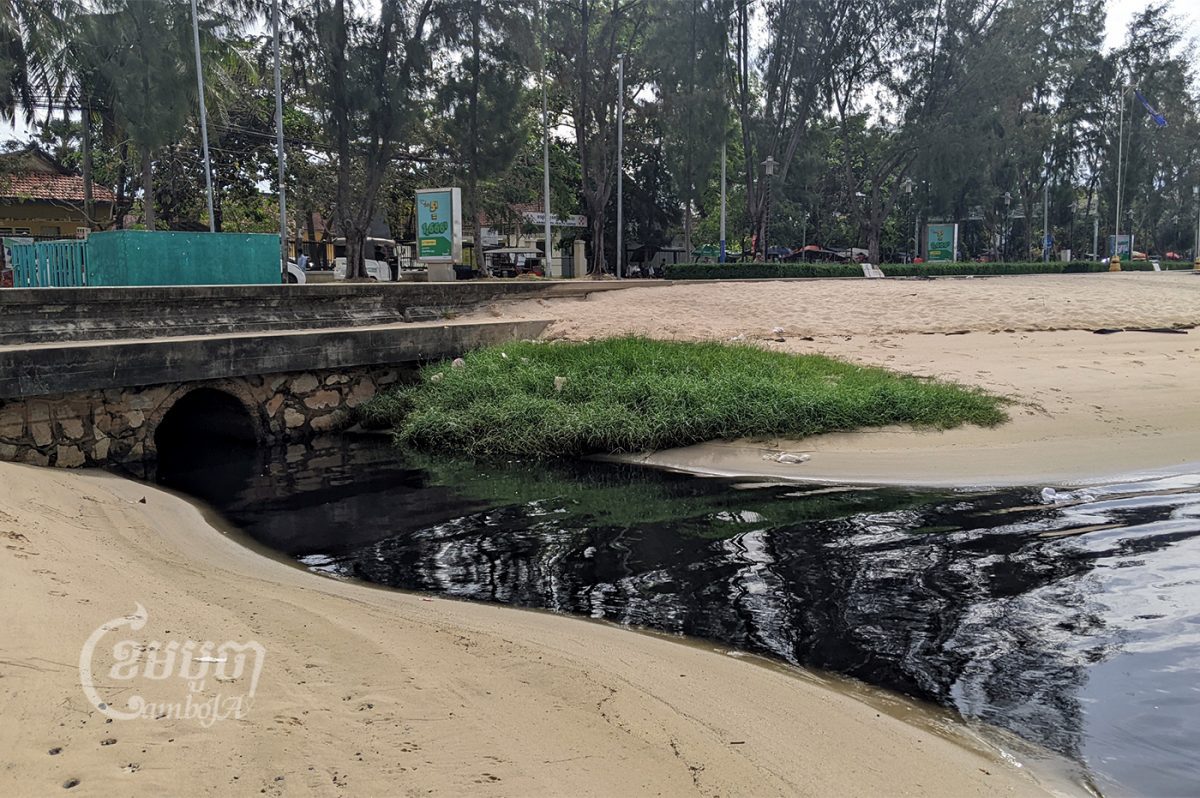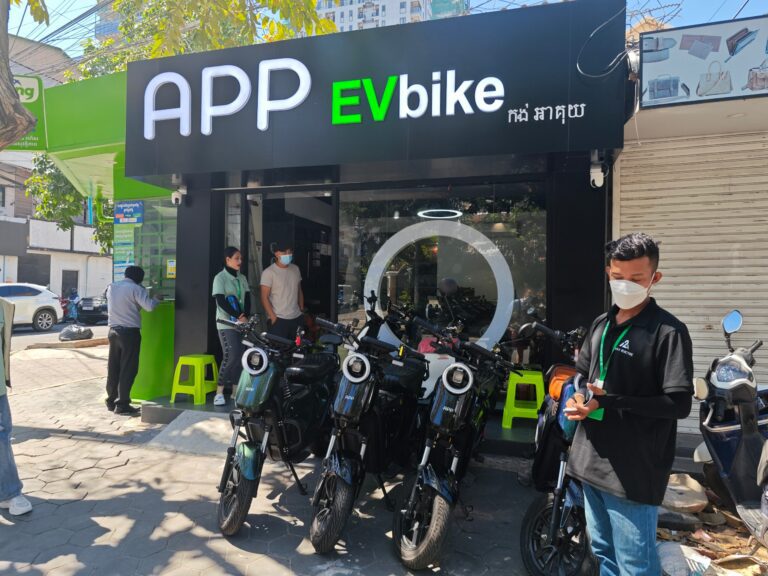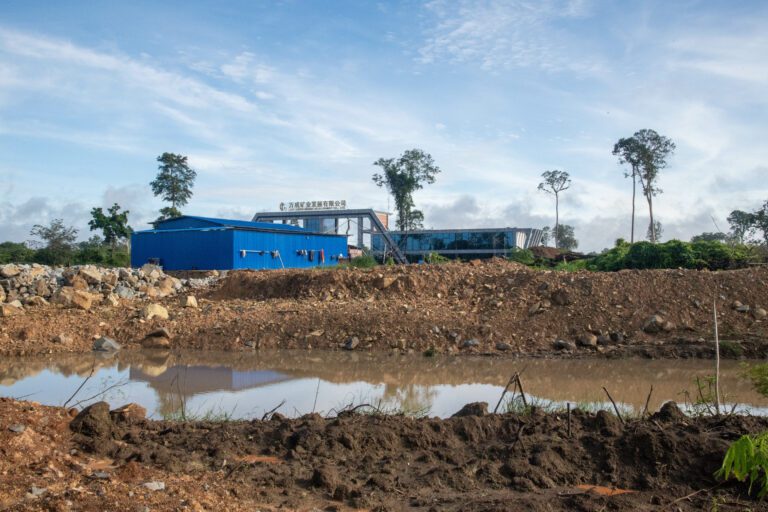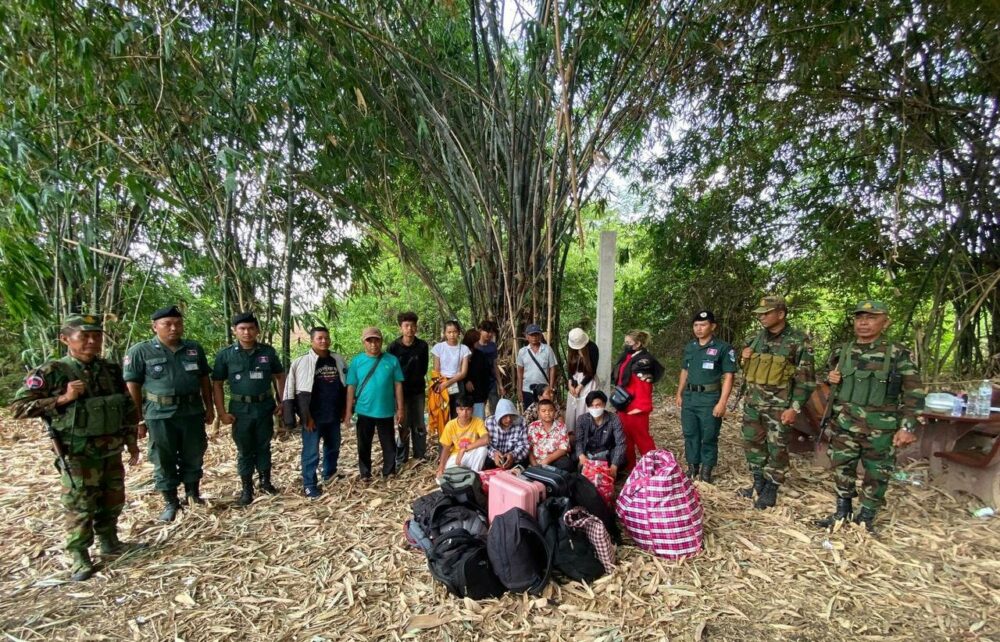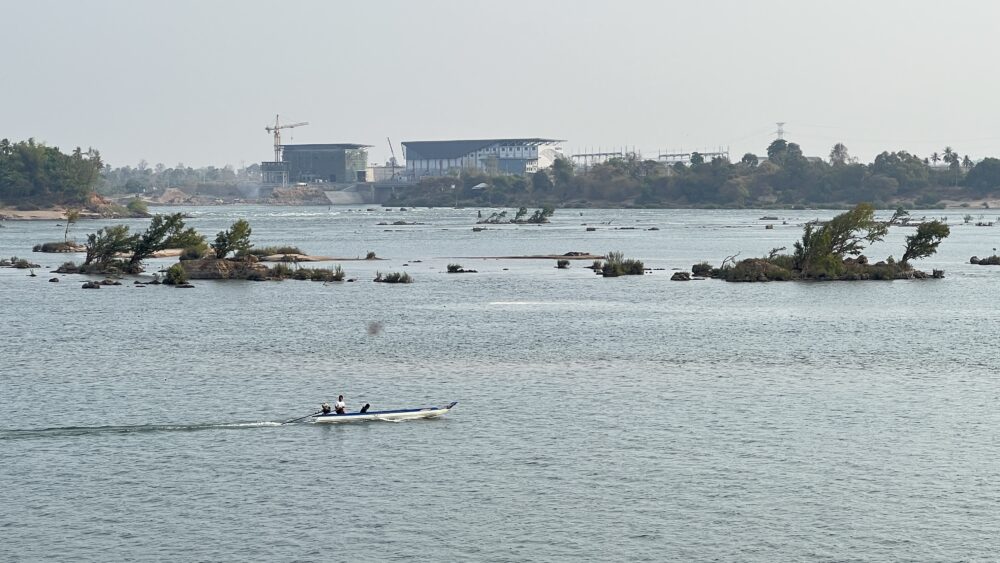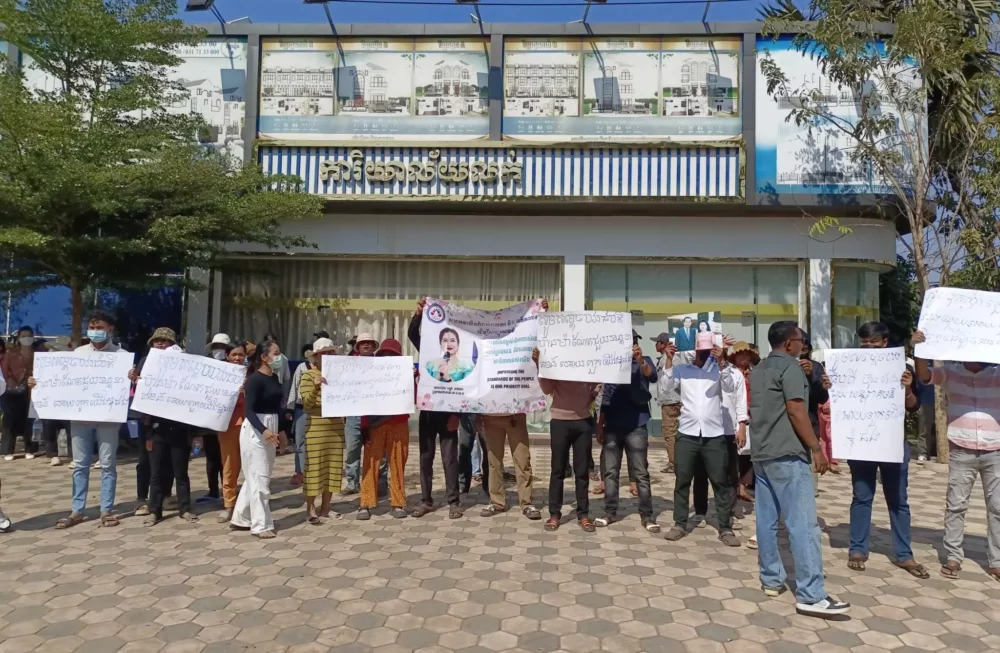Residents and vendors, as well as local tourists, in Kampot city are concerned about the waste water flowing into the city’s creek—polluting the surrounding environment, killing the fish and giving people itchy skin. The authorities have said that the wastewater treatment system is expected to be completed by 2023.
Ms. Sophal, a 47-year-old street vendor, said that the wastewater has been flowing into the creek, linked to a stream running through the city from the sea, for years. She added that when the sea level goes up, the wastewater spreads a bad stench and also spills over from broken drainage onto the roads.
Living in Kampot city, a coastal province, for over 40 years, she observes that the dumping of wastewater into the creek has also been affecting recreational areas and tourist sites in the vicinity.
“The previous governor had planned to extend the park along the creek [by filling it in with sand], but he was replaced and the project was stuck here, wastewater also still here, and in the rainy season the smell is also bad,” she said.
Sophal implored the authorities to prevent the wastewater from flowing into the creek, in order to better attract local and international tourists and to promote Kampot province. She also said that there was a lot of trash in the park and that it should be cleaned up.
“If it is cleaned and many tourists come, I [am] also happy,” she said.
Ms. Sros, a fruit vendor along the Kampot city creek, said that she does not know the exact source of the sewage, but that it likely comes directly from Kampot city. She said that the polluted creek water has given her child itchy skin, with rashes and blisters, after playing in the creek.
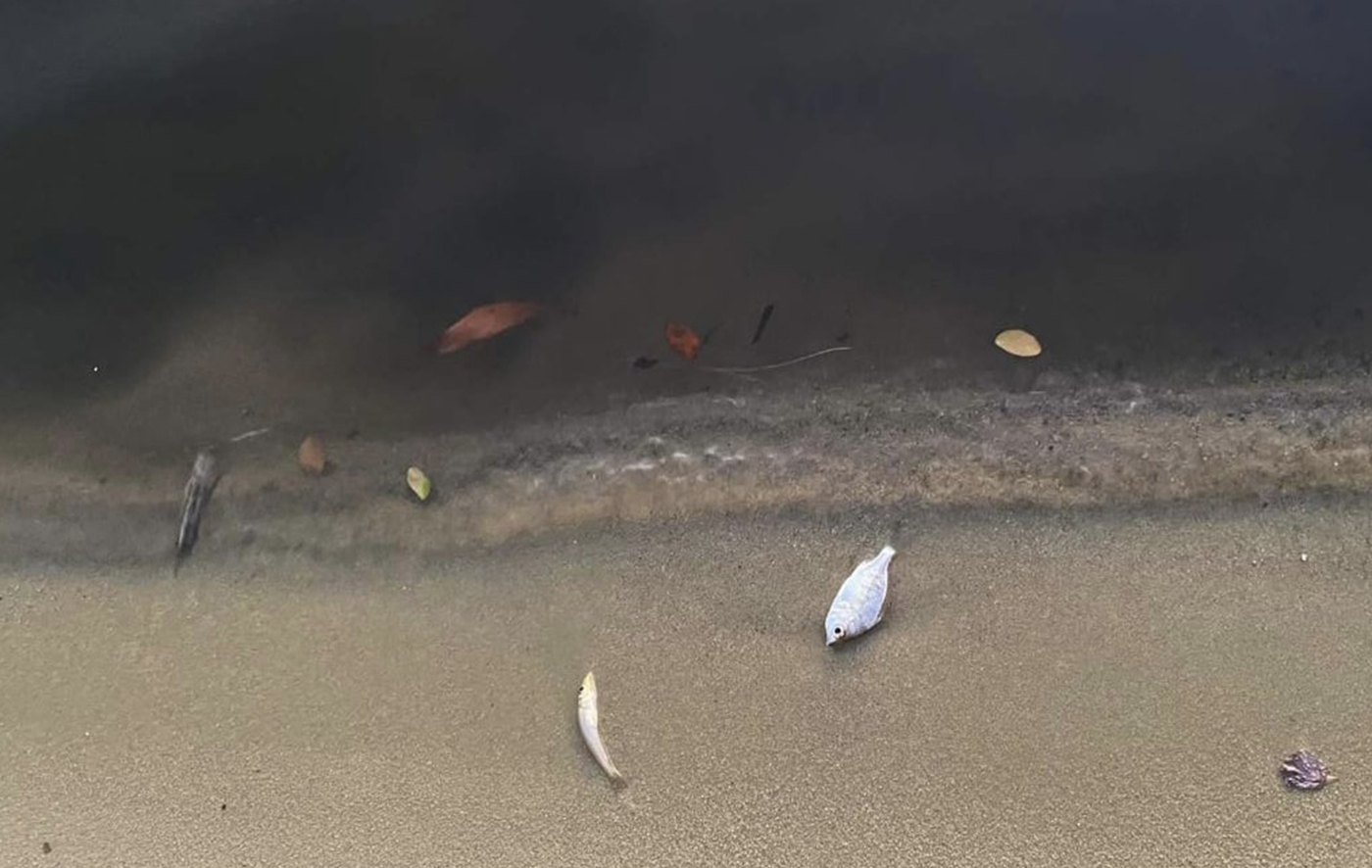
Ms. Sotheary, from Phnom Penh, has visited Kampot for both work and tourism. On February 19, she posted some photographs of dead fish on Facebook and wrote: “Kampot city’s creek water turn to black color and [dead] fish floating, sadly.”
Ms. Sotheary confirmed with CamboJA via her messenger that she had indeed seen the dead fish floating on the surface of the dark water, which flowed directly from the drainage into the creek, without first being treated.
Ms. Vibol, a 33-year-old Kampot resident, in the Kampong Bay commune, also expressed her dismay at seeing wastewater flowing into the creek. She said this pollution has been happening for years, damaging Kampot’s tourism prospects, and called for improvements to the drainage infrastructure.
Besides the pollution of the creek itself, garbage is also scattered all along the creek bank, and it often flows into the drainage and piles into the park along the creek. Landslides have also occurred here, causing further congestion of waste.
A young man called Thorn, 22, from Kampong Chhnang province, went to relax at the creek bank but was disappointed to see how dirty the water was.
“We should not do that, it is not good, and I think in the future it will be worse. In fact, as I sit here, I can smell the waste,” he said, adding that the authorities need to treat the wastewater before letting it drain into the creek.

Kampot city’s Kampong Bay commune chief, Ngoun Saroeun, acknowledges that the wastewater has been draining into the creek for years, confirming that the wastewater is from the city itself.
“We use the old drainage system for the entire Kampot city and the wastewater flows into the creek, where [it is] the only one place to store,” he said.
However, Saroeun said that the authorities are not ignoring the problem, adding that a wastewater treatment system is under construction under the 10 million dollars on loan from the Asian Development Bank, with an expected completion date by early 2023.
Saroeun also said that the wastewater treatment system is being built, in four phases, on the seven hectares of land. Meanwhile, he urges the people to keep the city clean and be patient as authorities accelerate their efforts to solve the issue.
Soy Sinol, the director of the Kampot Tourist Department, said that the wastewater has been flowing into the creek since the French colonial era, and that the authorities are managing the issue to keep the city clean.
“The drainages are just for flood management, not for [draining] the water from residents’ houses, and now the Kampot administration has built two main wastewater treatment systems in between the two main bridges,” he said.
He added that the authorities are also working on the current problems and are building a wastewater treatment plant to purify water before it is released into the sea.
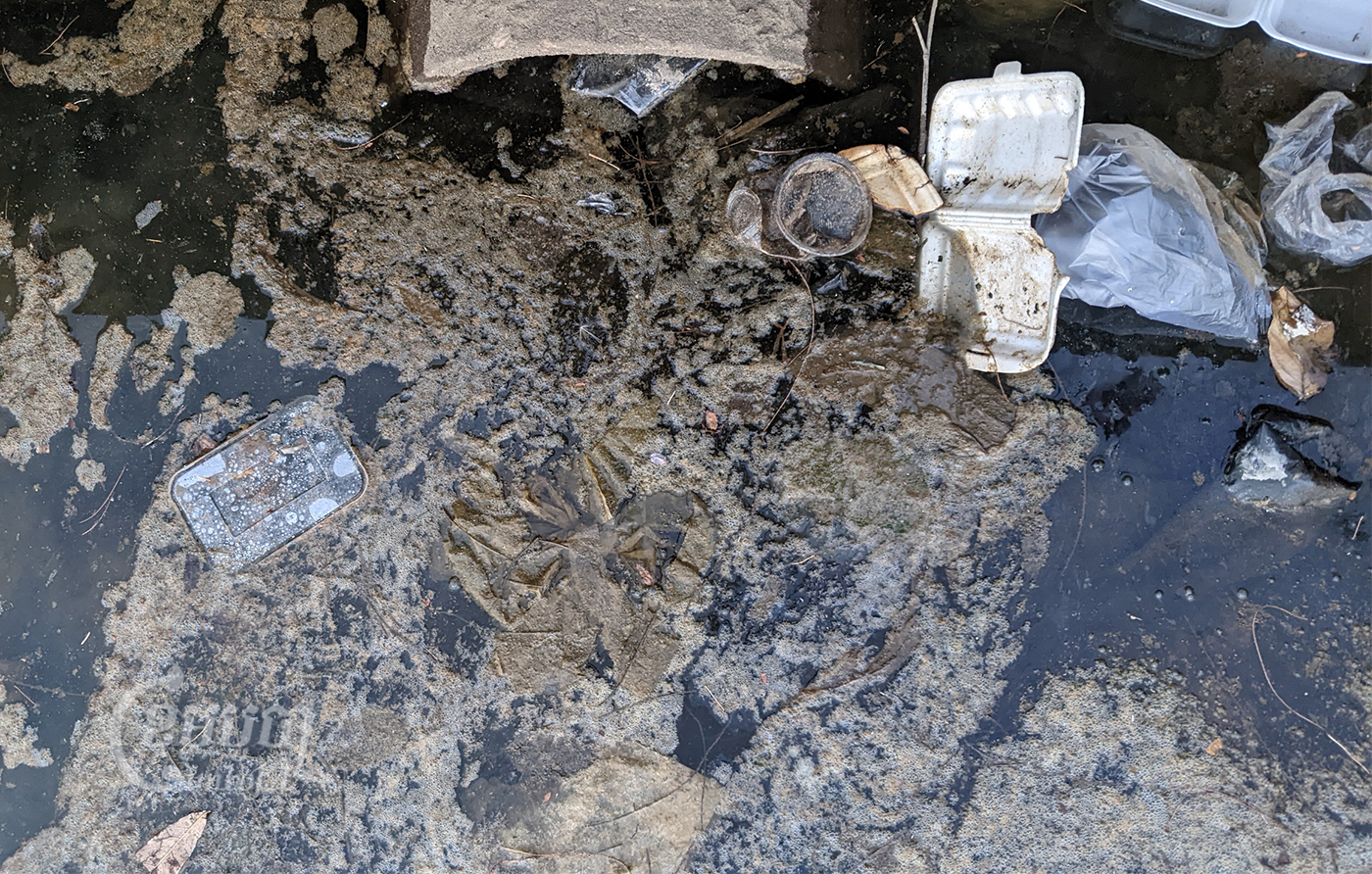
Similar problems are happening in Siem Reap. In early February, Thon Ratha, a former member of the Mother Nature organization, released a short video on Facebook showing wastewater draining directly into Siem Reap river. He expressed concern that the wastewater would harm public health and biodiversity in Tonle Sap lake.
Out Latin, a project coordinator of Cambodian Youth Network (CYN), said that draining wastewater into the creek or sea is not a new problem and the authorities are not doing their best to manage it.
“We have seen that since the previous governor, and now [with] the new governor, the wastewater management [is not] managed well, especially in the central part of Kampot city,” he said.
“I think if the authorities have strong will to solve the issue, it will get done quick because the authorities have the power to manage the issue. They can set up some regulations to prevent people from draining wastewater into the creek or [to mandate them] to purify it before releasing it into the creek,” he added.
Pointing to similar problems in provinces like Kandal and Phnom Penh, where wastewater is also drained into the river, he said that the authorities seem not to regard wastewater management as a high priority.


